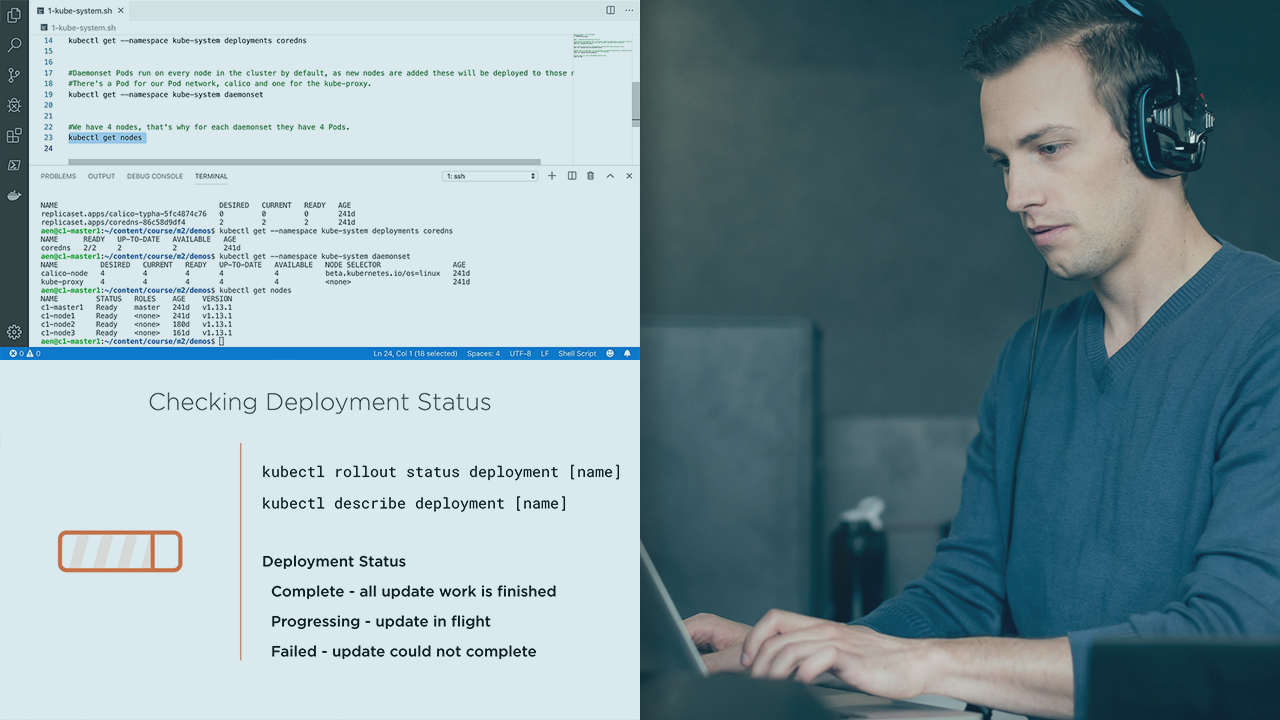- Course
Managing Kubernetes Controllers and Deployments
Learn how to deploy and maintain applications using Kubernetes Controllers. In this course you'll learn how to select a Controller for your workload, deploy it, and maintain your container-based applications in your Kubernetes cluster.

- Course
Managing Kubernetes Controllers and Deployments
Learn how to deploy and maintain applications using Kubernetes Controllers. In this course you'll learn how to select a Controller for your workload, deploy it, and maintain your container-based applications in your Kubernetes cluster.
Get started today
Access this course and other top-rated tech content with one of our business plans.
Try this course for free
Access this course and other top-rated tech content with one of our individual plans.
This course is included in the libraries shown below:
- Core Tech
What you'll learn
Let’s take your Kubernetes admin skills to the next level and continue along on your Certified Kubernetes Administrator (CKA) learning path. This course, Managing Kubernetes Controllers and Deployments, dives into the primary building block of Kubernetes-based applications: Controllers. In this course you will learn the critical skills for deploying and maintaining your self-healing applications in Kubernetes. The course covers Deployments, DaemonSets, StatefulSets, Jobs, and CronJobs. You'll also learn how to select a Controller type for your workload, and how to deploy and maintain your container-based application in your Kubernetes cluster. This course can also help you prepare for your Certified Kubernetes Administrator (CKA) certification.
Managing Kubernetes Controllers and Deployments
-
Introduction, Course and Module Overview | 1m 46s
-
Kubernetes Principals, the Controller Manager, and Introduction to Controllers | 6m 33s
-
Lab Environment Review | 1m 41s
-
Demo: Examining System Pods and Their Controllers | 2m 44s
-
Introducing the Deployment Controller and Deployment Basics | 5m 49s
-
Demo: Creating a Basic Deployment Imperatively and Declaratively | 6m 53s
-
Understanding ReplicaSet Controller Operations | 7m 47s
-
Demo: Creating a Deployment and ReplicaSet Controller Operations | 5m 55s
-
Demo: ReplicaSet Controller Operations - Working with Labels and Selectors | 3m 5s
-
Demo: ReplicaSet Controller Operations - Node Failures | 5m 33s
-
Module Review and What's Next! | 59s

